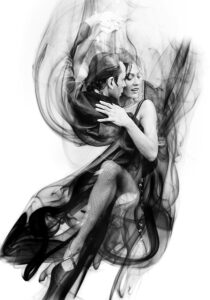Different writers approach their new work-in-progress in (many) different ways. Approaches tend, however, to fall along a spectrum. At one end are the detailed plotters and at the other are those who open their computers, or a blank note book, and set to work with only the vaguest idea of where they’re going. Writers joke about being a plotter or a ‘pantser’, ie someone who flies by the seat of their pants.
My own approach has, so far, tended to be somewhere towards the pantser end, where I would write a general plot idea (I won’t call it a summary), think about characters and what they’re doing, and then get going. I tried it the other way, and once I even did one of those diagram thingys with a core idea in the middle and lines leading off and linked etc – and confused myself utterly. But so far, my approach has worked, in that I’ve written first drafts and then, having discovered what the story’s about, gone back and reworked the book to fit. I’m a slow writer but I have books out there!

But then I started the sequel to Keepers, which several people kindly asked for and it wasn’t long before I hit a brick wall with graffiti sprayed across it: Thou shalt go no further.
Well. What to do? I knew how the story should unfold, and how it would end, but not much detail on how it would get there. The first few chapters had flowed along nicely, my leading characters were in the right position for the big change which would set the course of the tale. Yet, here I was, wordless. Possibly, I needed a different approach to this work, for whatever reasons.
Twitter writers love a poll
So I polled the Twitter #writingcommunity with this question:
Plotting vs pantsing? Which one are you and please say why in the comments. Also, any tools you use and like.
Twitter writers love questions like this, ie writing-related, and they responded generously, with 167 respondents and over 50 comments.
This was the end result, which shows a lot of people like myself.
Detailed plotter ……………………. 9.6%
I do an outline ……………………. 36.5%
I see where things go …………….. 53.9%
The comments were fascinating, however, and here I’ve pulled out the key approaches which we use, to make some sense of it all.
The organic approach, ie I see where things go
The majority opted for this, although mostly (not always) they have some idea of the direction of travel –
- If I try to look at the big picture, it crumbles to ashes around me. Writing as I go is like reading a new book …. to see where it goes.
- I have the idea, jot out a few main points … I start to fill out scenes as they come to me, adding more and more scenes in whatever order, and then go back and tie them together.
The characters act it out in front of me

A subset of the organic approach, and very common, is that the characters drive the story and the author ‘simply’ writes it down –
- The characters lead me there – sometimes they make terrible choices.
- I know the first scene and last scene. The rest is up to my characters. Some choose the long and winding road.
- So many people said you MUST outline. But then the characters popped into my head and started talking so fast, I couldn’t stop to outline.
This suggests to me that these writers have really gotten into their characters’ heads (or they might claim the other way around). They’ve built their personalities, their motivations over the course of the story and it’s led to where it’s led.
The characters don’t always get the last say, however. Several people said they wrote what their characters demanded until some roughly midway point. Having told the core of the tale, the author then paused and plotted what needed to happen to get to the end they had (mostly) planned in advance.
Outlining – of sorts
While the survey results heavily favoured the ‘I see where things go’ approach, a big chunk of the writers who also commented are somewhere in the middle of plotter or pantser.
- I plot beginning, mid point and end. I may have 30 scenes outlined in a few sentences. Then I see how it unfolds.
- I know the beginning, the end and a few points along the way. It’s like doing a dot to dot, but I don’t know how I get to the next point until I start writing it. Then it just comes to me. It’s scary and amazing at the same time. (Yes, it is!)
Genre plays a role
If your book is plot-driven, as in thrillers and mysteries, then plotting is likely to save you from a terrible tangle.
- As KT McGivens of the Katie Porter mystery series said: Given that I write mysteries in the classic sense (red herrings etc) I’m a detailed plotter. I couldn’t do it otherwise. Sometimes minor threads end up differently, but never ‘whodunnit’.
Historical fiction, where characters are interacting with real people against a real background, also demands a level of detail to start the process.
- the historical events give me a sense of where I can then hang my story. [Ed note: this is very relevant to me right now, with my next big project, set at the time of the Great Flood of 1607 along the Bristol Channel)
Plotting can save time
Plotting to any detailed level saves time in the actual writing, eg
- I like to know where the story is going. That lets me add foreshadowing details as I write. (How often do the pantsers have to add those in afterwards?)
Flexibility is key!
- I started out pantsing but couldn’t get anywhere. Once I started outlining, my writing took off, as did my characters. The outline doesn’t dictate where the story goes. At one point my characters wanted to go in a different direction, so I redid the outline. (Can’t have sulky characters.)
Technology has had a huge influence
Plotter or pantser, technology has ‘helped’ in a way which only us older writers fully grasp. I’m not talking about plotting software – of which there is plenty, and only one person said they used it. I mean the simple word processor, which allows us to either build detailed outlines in Excel, or to cut scenes, move them, and re-write whole passages so easily. Perhaps too easily!
Conclusion
My reading of the feedback is that whether plotter or pantser, the writer knows the story they want to write, it’s in their sub-conscious. Some need to tease it out, quickly or slowly, but building on each step and developing the characters until, with a rush, all is clear.
With clarity, however, generally also comes the need to re-work earlier chapters, make sure motivations align, perhaps remove characters which have faded, or beef up or toss out sub-plots which have gone nowhere.
Others make sure they’re clear from the start how it’s all going to pan out, either because they have to be (like mystery writers) or because, dare I say it, they have more organised brains. They detail it, and write.
The plotters appear to be a small minority however. Most of us – whether outliners or total pantsers – appear to fit this great description from my good friend Alexandra Peel, who can have the last word:
The cobwebs of an idea hang about my mind as I race through the story as it seemingly unfolds itself. I write as though watching it happen in real time. Later, I have to re-draft it into a meaningful shape.

Many thanks to the #writingcommunity for this insightful look into your collective author brain. Are you a plotter or pantser? Let me know!
Oh, and how is the sequel going? Thank you for asking! Gangbusters – I’ve written a seven page outline, which doubtless will change. [ed note: it didn’t much, and you can buy Walking in the Rain here]
Find more writing tips by clicking here, using the search bar at the bottom for specific topics.